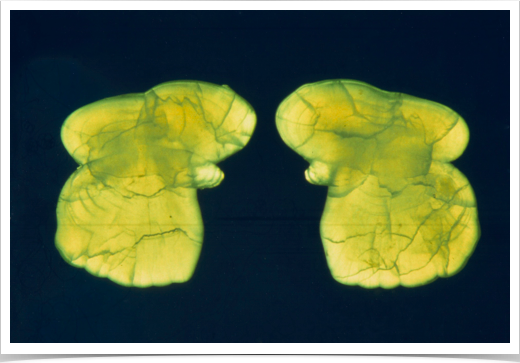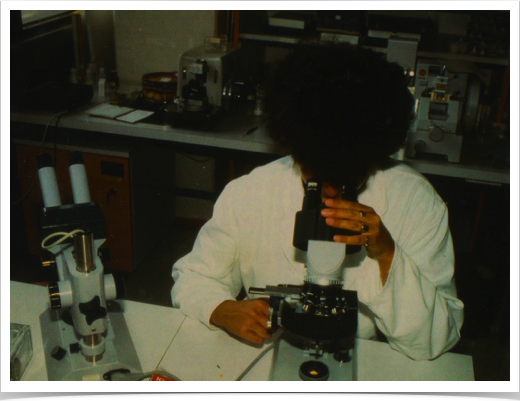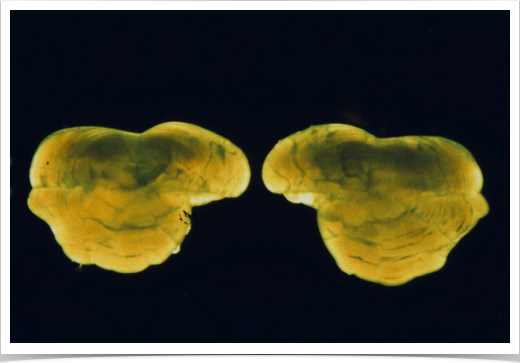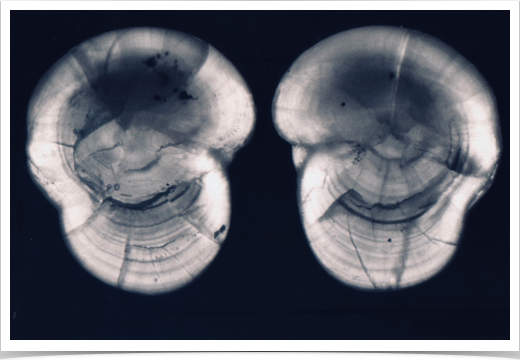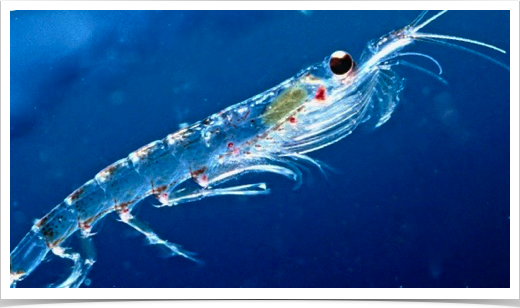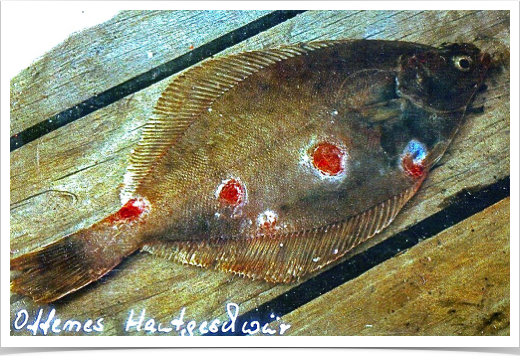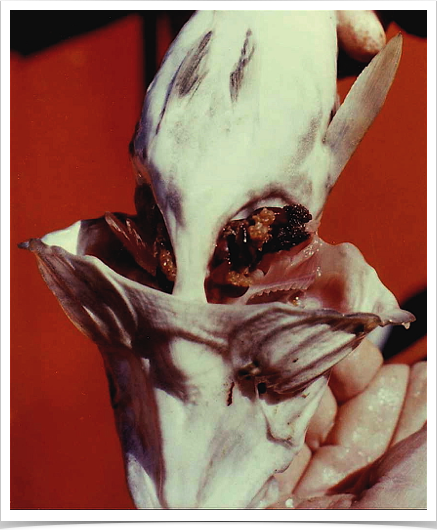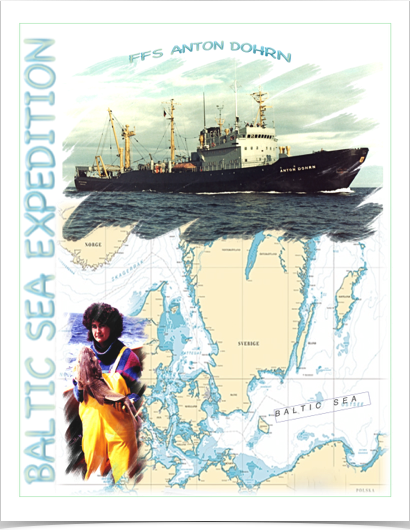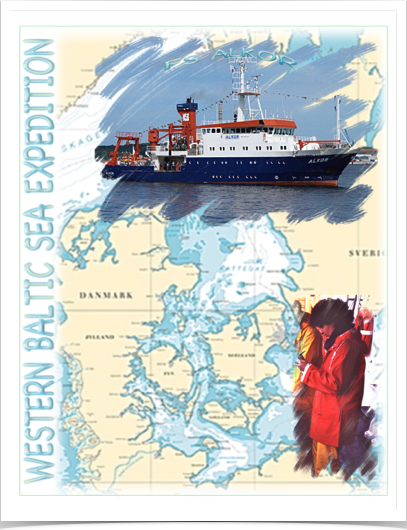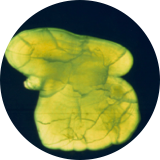
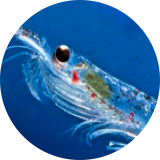
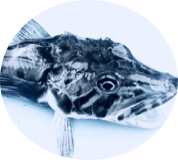
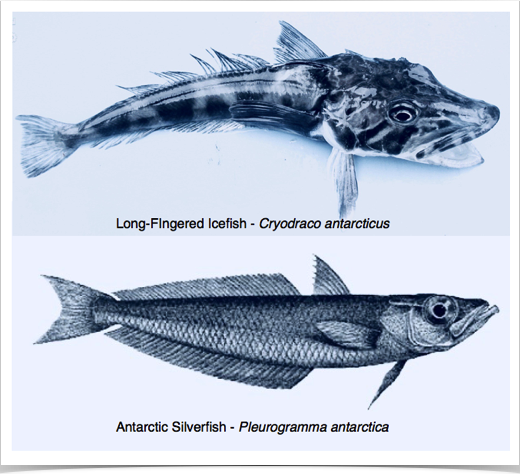
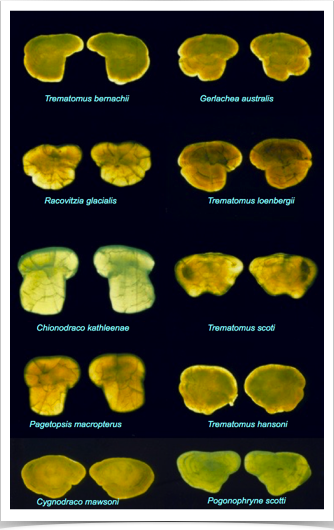

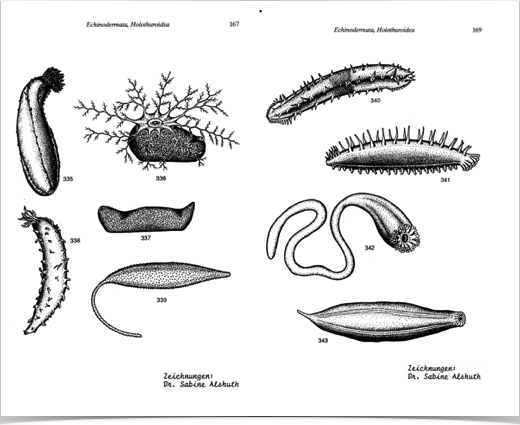
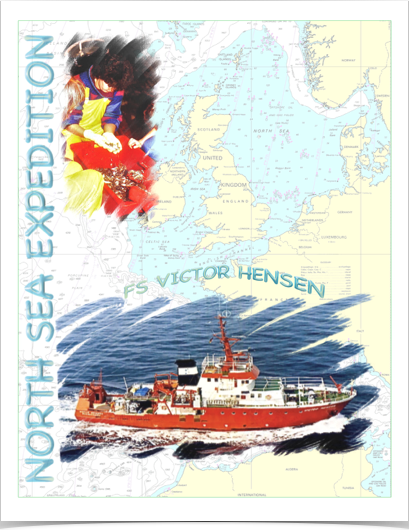
Guide to identifying Antarctic fish otoliths for predator-prey interrelationship studies in the Southern Ocean - a useful tool for fish recruitment and population studies and important for future management of potential living resources and ocean conservation?
RESEARCH ASSISTANT: Research at INSTITUTE FOR MARINE RESEARCH, Bremerhaven/Germany and ALFRED WEGENER INSTITUTE - in collaboration with the University of Bremen and University of Kiel (Germany) - Kiel Marine Research Institute. The Institut für Meeresforschung Bremerhaven (Ifmb) was founded in 1919 as an Institute for Marine Fisheries. In 1947, the institute received its current name (Institute for Marine Research) and the new contract to participate in basic research in the field of Oceanography. Since 1998, the institute has been part of the Alfred Wegener Institute.
GRADUATE RESEARCH STUDIES:
• Antarctic ecosystem studies as part of the international BIOMASS Program (Biological Investigations of Marine Antarctic Systems and Stocks) including Antarctic fish fauna research (fish growth and age studies using fish otoliths), krill ecology population study and Antarctic deep sea echinoderm population studies.
• Preparation and documentation of Antarctic Fish Otolith Atlas (dissecting, cleaning, measuring and photographing fish otoliths). Atlas used for predator-prey interrelationship research in the Southern Ocean around Antarctica.
• Growth studies of notothenioid Antarctic fish species- examining relationships between otolith length and fish length - and fish length and body mass. Otoliths can be used to back-calculate prey size and biomass - useful to estimate marine mammal prey consumptions, and potential impacts on fish stocks.
• Develop key to otoliths ID of notothenioid fish species - based on geometric otolitsh shape - to facilitate otolith identification found in predator stomachs. Including otolith preparation for SEM analysis.
• Antarctic Krill (Euphausia superba) research - population ecology, growth studies and statistical analysis. Aimed to krill production estimation and assessing the species' potential yield, stock abundance and biomass.
• Antarctic deep sea echinoderms - morphological study and drawings for publication in Sieg, J & J. W. Wägele (1990): Fauna of Antarctica. Paul Parey Publ. 220 pages. Specimen studied were collected during an expedition to Antarctica from the deep sea benthos in the Wedell Sea in depth over 1,000 meters.
• Participation in ocean expeditions to the North Sea, Baltic Sea, Mediterranean Sea and Atlantic Ocean - conducted in collaboration with University of Bremen, University of Kiel - Marine Science, Bundesforschungsanstalt für Fischerei Hamburg and Cuxhaven (Germany) and AWI/ Institut für Meereskunde Bremerhaven. Aboard research vessels ANTON DOHRN, VICTOR HENSEN NEREIS and ALKOR.
• Sprat reproduction and recruitment studies as part of the Reproduction Biology of the sprat, Sprattus sprattus, in the North Sea Project. Funded by the DFG (Deutsche Forschungs Gemeinschaft) and part of the IRP (International Recruitment Project).
• Anthropogenic marine impacts related to fish diseases and parasites research and monitoring in the North Sea and Baltic Sea.
• Benthic marine ecology research in North Sea, Baltic Sea and Mediterranean Sea. Long-term monitoring of the benthic Mediterranean fauna to evaluate the marine ecosystem status - at Oceanographic Observatory of Banyuls-sur-Mer - OOB.
Publications related to these research projects include:
Alshuth, S. 1993. Iodine supplier and natural product: Algae. (German – Text and Photography). Sylt Magazin 1993, 46-48.
Alshuth, S. 1990. Record of diversity - shore birds (German – Text and Photography). Sylt Magazin 1990, 48-51.
Alshuth, S. 1990. Mysterious shoals - a guided excursion (German – Text and Photography). Sylt Magazin 1990, 34-35.
Alshuth, S. 1989. The worm is still in there. Fish parasites (German – Text and Photography). LOGO 4/5, 44-45.
Alshuth, S. 1989. Shoal in the surf - and why a lagoon shines pink (German – Text and Photography). Sylt Magazin 1989, 4-6.
Alshuth, S. 1987. A short-lived shoal (German – Text and Photography). kosmos 2, 30.
Alshuth, S. 1987. The extremities of a shrimp - a chapter of functional morphology (German – Text and Photography). Mikrokosmos 76 (12), 373-377.
Alshuth, S. 1986. Fish Otoliths - Sparkling jewels? (German – Text and Photography). Mikrokosmos 75 (2), 55-57.
Click on any picture below to start slide show.
INSTITUTE FOR MARINE RESEARCH
& ALFRED WEGENER INSTITUTE
